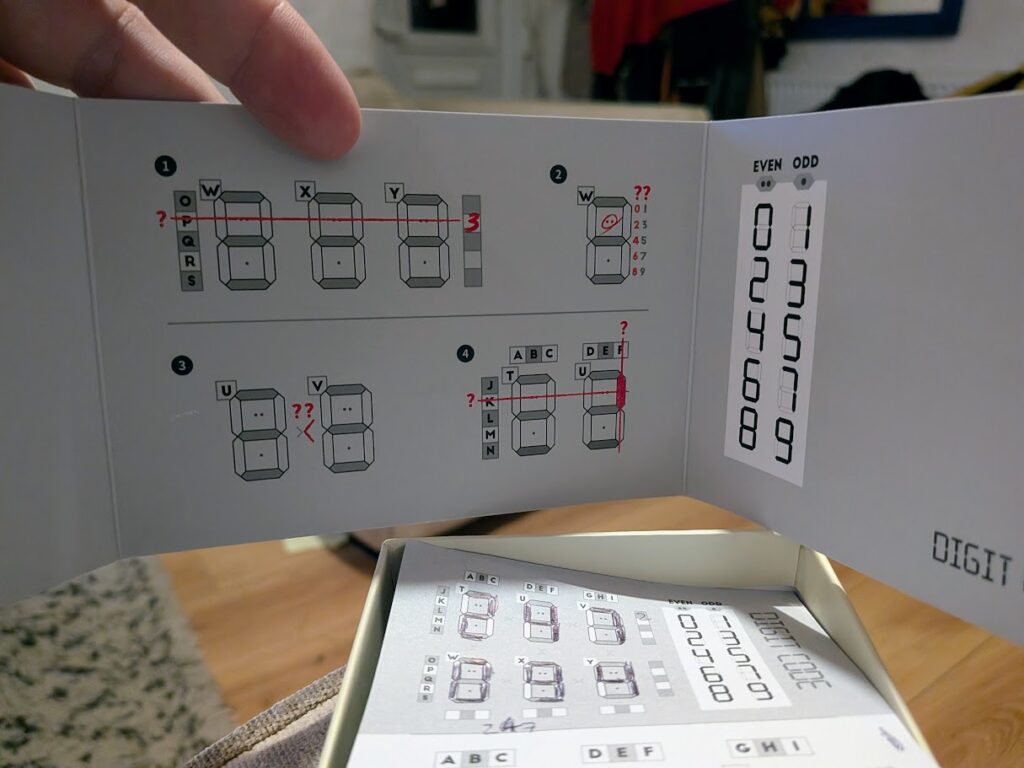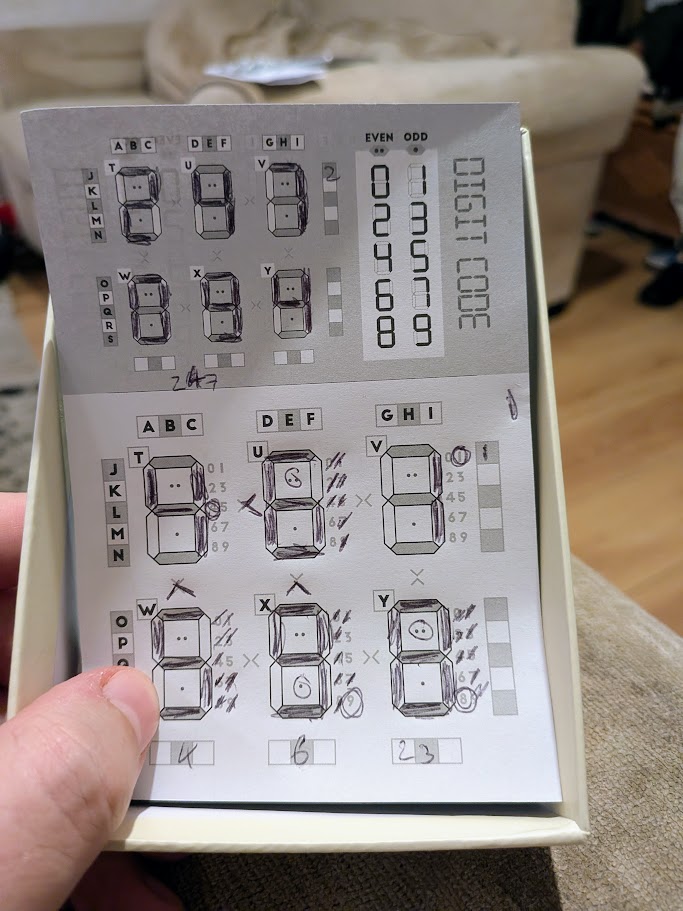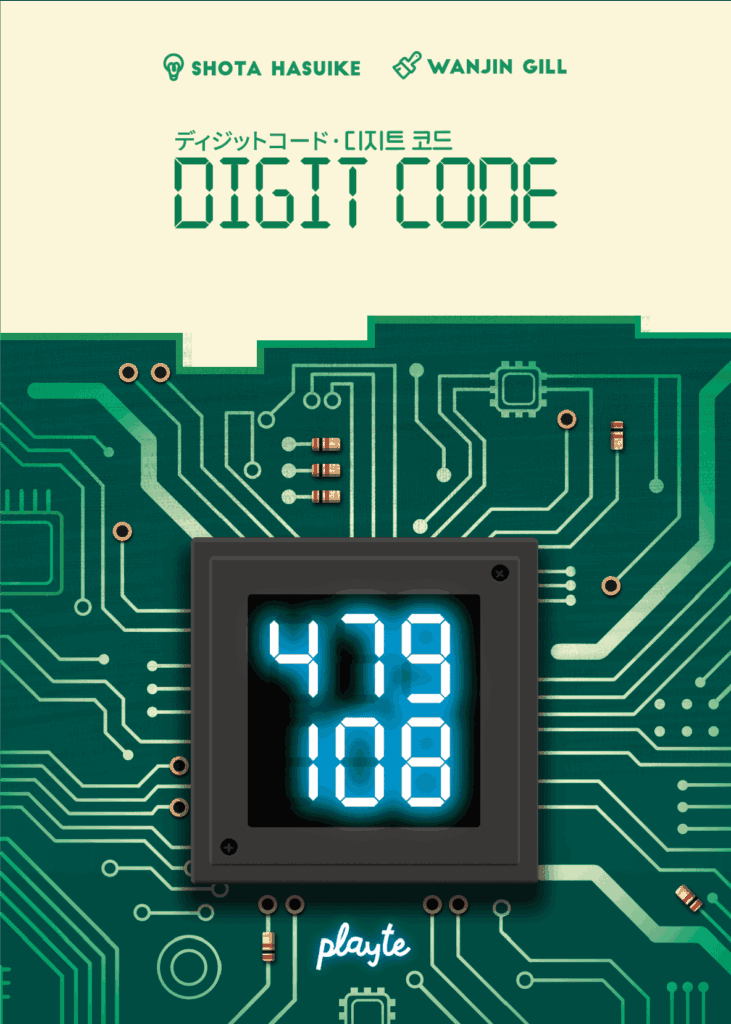A review copy of Digit Code was kindly provided by Playte. Thoughts & opinions are my own.
As much as some board and card games tie themselves in knots trying to make a theme fit, sometimes they don’t. I fell in love with Digit Code from Playte as soon as I read the synopsis of the game.
For some unknown reason, we now find ourselves in a situation where we must quickly interpret a six-digit digital code.
Digit Code rulebook
I love it. No pretence. No trying to make something fit which really doesn’t, like a hermit crab wearing a Coke can. It’s just a case of the game mechanisms being enough to sell the game on their own, and you know what? They do. Digit Code is great.
Clock this
Are alarm clocks still a think? I still have a digital alarm clock with the big red numbers on it. You know the sort of thing, where each digit is made up from a number of lit segments. That kind of display is the premise for Digit Code. It’s a head to head duel where each player makes up their own six-digit code, arranged in two rows of three numbers. There are a couple of rules to adhere to, like the number of times a digit can appear being restricted to twice, and identical digits not being adjacent to one another, but that’s it.

Players take turns asking questions to try to figure out the other person’s code. You primarily do this by asking about rows or columns. There’s a little diagram on your player sheet with letters to identify each row and column. So, for example, I might ask you “How many segments are filled in on row J?”. Row J is the topmost row, so if you were to tell me “No segments”, I know that your top three numbers cannot include 0, 3, 5, 6, 7, 8, or 9, as all of those need the top segment filled. That’s a pretty extreme example that you won’t get too often, but you get the idea.
You can also ask if a digit is odd or even, if one number is bigger or smaller than its neighbour, and even give the grid reference for a particular segment to learn whether it’s filled or empty. Combine all of these, and do it before your opponent, and you’re on to a winner.
Final thoughts
This was never going to be a long review. There’s no theme to unpick, no grandiose ideas pervading the game’s setting. It’s a game about using logic to decipher a code before your opponent does. Despite that, Digit Code is excellent. It’s so streamlined and so clean. It’s a joy to play.

It’s possible to pick a bad combination of digits to use as your code, which can lead to a one-sided game, but you only need to get one game under your belt to understand the importance of placing numbers to lead to ambiguity. The theoretical question I gave above is a good example of this. If someone asks about a row or column and your answer is ‘zero’, that gives them way more information than if you’d answered ‘two’ or ‘three’.
I love logic problems and I love working out codes, so Digit Code is a massive hit for me. It’s so small and convenient that it becomes the perfect train, bar, or sitting-in-a-restaurant-waiting-for-your-food game. The only thing I can’t really comment on for now is longevity. I don’t know if a near-perfect set of questions exists yet, but my gut tells me not. The biggest problem you’re likely to encounter is getting hold of the game. Folks in the US can check out their Amazon store and eBay store, but over here is different. Playte are a Korean publisher without large scale distribution, so your best bet will be conventions or your favourite import games specialist.
Enjoying this article? Consider supporting me.

Digit Code (2025)
Design: Shota Hasuike
Publisher: Playte
Art: Wanjin Gill
Players: 2-5
Playing time: 20 mins


